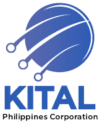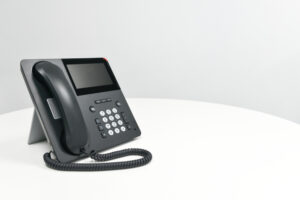Growing businesses and big, established companies that hire call centers trust the latter with very important parts of their operations, like lead generation (through outbound telemarketing), customer service, and sales processing (inbound call services). They also depend on call centers to thoroughly document calls and provide insights on the data derived from these calls.
Today, the expectations for call centers have gone beyond inbound and outbound call services. Businesses now look to call centers for assistance with the following:
- Improve customer experience without compromising efficiency
- Provide timely and stellar customer service
- Collect data and provide real-time and historical analytics
- Generate leads
- Process sales or purchases
Call centers that can accommodate these needs stand a higher chance of attracting clients. This is especially true if they have established metrics for measuring success in these areas (e.g., first-call resolution, call quality score, average handling time, and abandoned call rate).
To provide these services, call centers must be well-equipped and invest in call center phone systems — specifically, IP PBX systems and VoIP services — that will enable them to offer the services clients need and meet their clients’ expectations.
Phone System Features that Are Worth the Investment
Any company can invest in VoIP technology (Voice over Internet Protocol) and hire in-house operators to manage inbound and outbound calls. For call centers to attract companies and earn their business instead of bringing these services in-house, they need to offer more than what standard VoIP for businesses can offer.
Below are the call center phone system features service providers need to stay competitive today:
1. Digital Receptionist (also Interactive Voice Response or IVR)
A convenient feature that ensures calls are routed to the right call center agent, a digital receptionist helps callers bring their concerns to the right department in a shorter time by giving re-routing instructions.
Interactive Voice Response or IVR is another name for this feature. It is responsible for the recorded messages you hear when you call a customer service number. Examples of these instructions would be, “For credit inquiries, press 1. For refund requests, press 2.”
A digital receptionist helps filter and send calls to the appropriate call center agents. It improves customer experience because, first, callers don’t need to endure long minutes of being on hold. Second, it reassures callers that something is being done to entertain their calls. So even if they have to wait for five to ten more minutes before they can talk to someone, they can forgive easily.
Callers may not even have to wait at all. It leads us to the third advantage of IVR that contributes to improving customer experience: it can offer callers choices that will resolve their concern without speaking to an agent. For example, a telco customer can inquire about the remaining balance in his/her pre-paid mobile number by simply typing the numbers as requested in the IVR-guided call.
2. Automatic Call Distribution (ACD)
This feature supports the digital receptionist by automatically sending calls to the right agents based on the choices the caller makes. Call centers can also activate ACD independently. For instance, they can set the system such that filtered inbound calls (calls that have passed through the Digital Receptionist) will automatically go to idle or open lines (agents who’re free and can receive a new call). This cuts short the callers’ waiting times and boosts each agents’ average calls received per day.
The ACD is a helpful addition to IVR; if the choices presented are not enough and a caller chooses to talk to a live agent, the ACD will kick in and send the call to an available line.
3. Call Presence Indicator
This is one of the features of modern call center systems that benefit supervisors who may have to manually redirect calls to agents who can address callers’ concerns. Human error can happen even when you have sophisticated tech catering to your needs. A caller, for example, might press the wrong number by accident and be directed to a sales agent when he/she wanted to talk toa customer service representative. The Call Presence feature is a contingency for situations like this. It shows supervisors the call presence status of each agent at a glance. So if a call that has already gone through IVR has to be redirected asap, they can find an available agent and send the call to him/her right away.
4. Call Recording
This feature is useful for call quality assessments, reviewing call protocols (e.g., a caller diverged from the predicted responses, thereby forcing an agent to also diverge from the approved script), and establishing liability when there’s a need for it. Assuming that the call center uses advanced IP PBX systems, calls will be logged instantly and stored in the cloud. Call Recording is usually an attached perk of VoIP telephony, so if you invest in this technology, you’ll get crisp call recordings without having to install clunky hardware or software.
5. Call Monitoring
Another feature for supervisors, Call Monitoring, enables trainers and team leaders to monitor new agents as they are deployed to the main floor. Not only can they assess trainees’ performances but also determine if there are gaps in their current training programs that must be filled immediately. People in sales can also use Call Monitoring to get real-time insights into the customers’ needs.
6. Call Analytics
Detailed analytics about the call center agents’ performance is crucial for assessing service quality. It’s also important for supervisors to have real-time information to implement contingencies immediately when necessary (e.g., know at a glance if outbound calls for lead generation are falling short of the expected output, with respect to the client’s timeframe).
The Call Analytics feature gives call centers reliable data for the metrics by which they measure performance quality, whether by agents, teams, projects, or the company as a whole.
7. Internal Chat
Technical and customer support can be improved when call centers have an Internal Chat feature that enables operators and specialists to collaborate outside an ongoing call. As an internal tool, it can run on the background without interrupting the caller’s time with the responding agent. If the caller must be transferred to another agent, he/she won’t need to repeat the problem: all pertinent details would ideally be relayed through Internal Chat.
8. CRM Integration
This feature is most beneficial for clients that keep customer profiles (e.g., healthcare service providers). When callers come through the line, agents can also pull up their customer profile, which comes from the client’s CRM database. It allows the agent to skip the basic questions and let the caller get to the meat of the matter. They may even find opportunities upsell with products and services that are relevant to the caller’s needs.
Invest in the Right Tech to Meet Call Center Market Demands
The duties relegated to call centers are expanding, and only when they have robust and fully-equipped PBX VoIP systems can they meet their clients’ needs. By investing in call center phone systems that integrate analytics, data recording, collaboration tools, and CRM, among others, call centers can become the full-fledged partners their clients will stick with.




